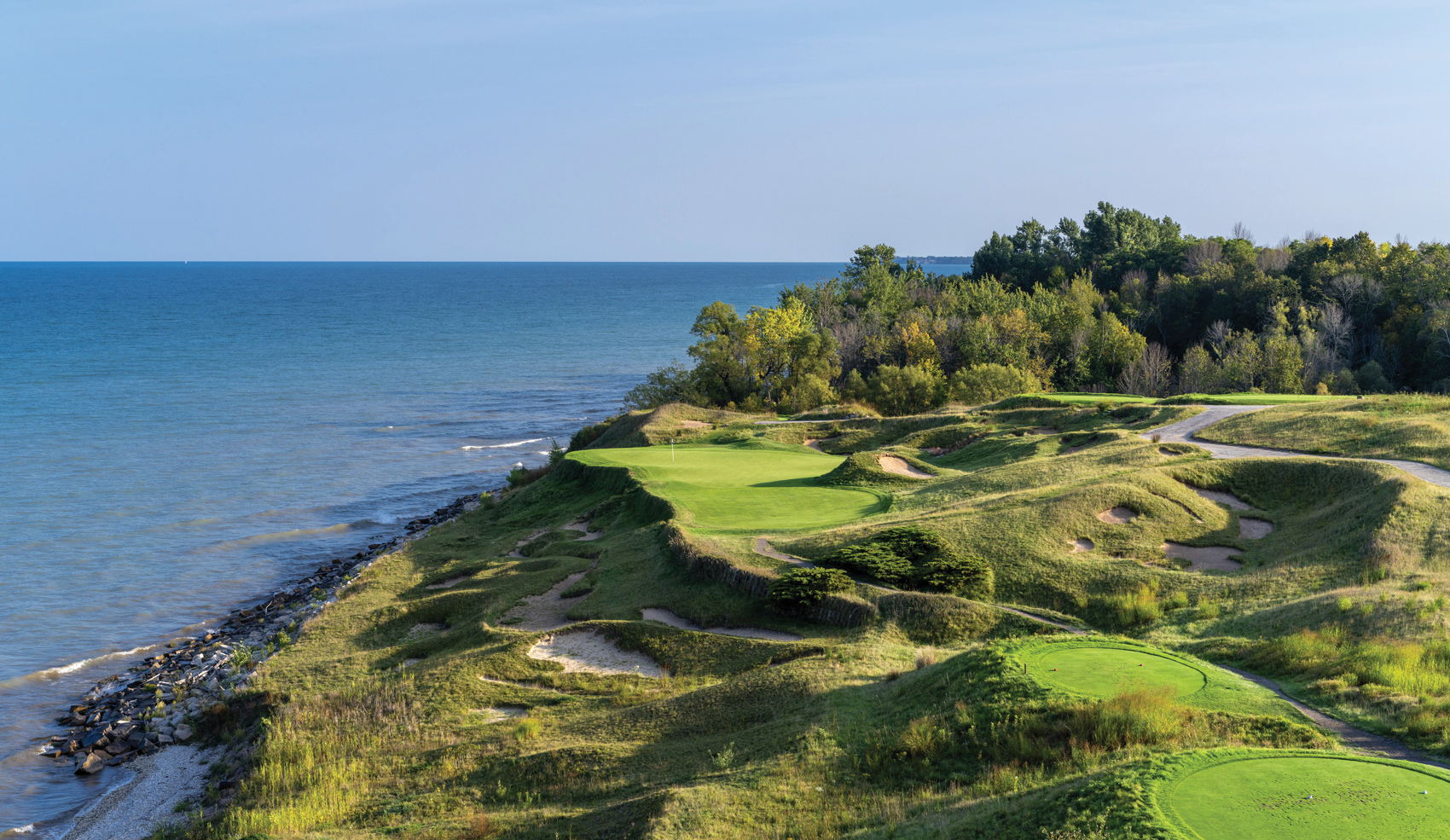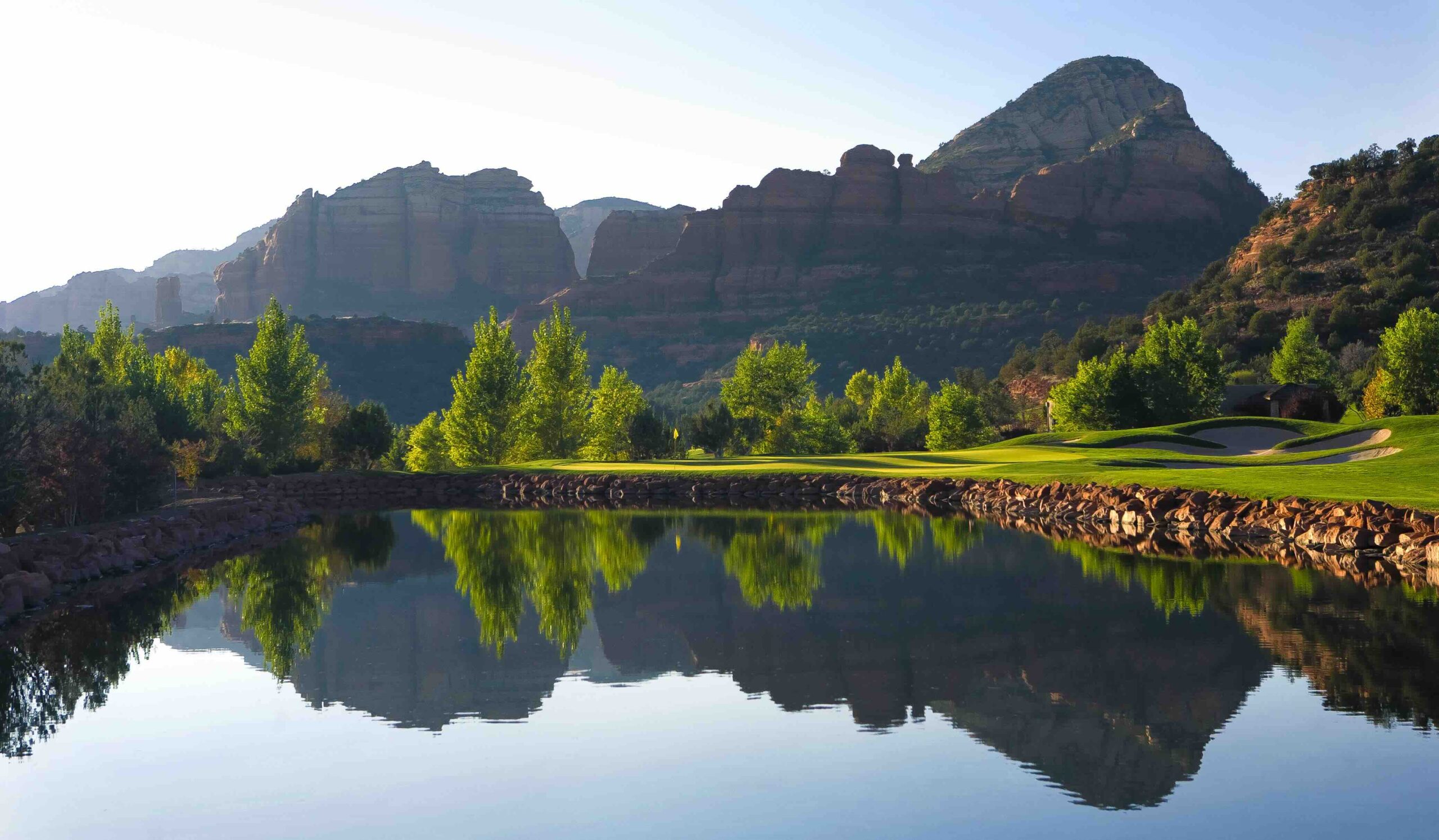
or decades, course architect Phil Smith apprenticed with both Jack Nicklaus and Tom Weiskopf, meticulously learning the trade and understanding the art of golf course design. It was with Weiskopf that Smith formed a partnership, and the two of them created several award-winning layouts, perhaps none better than the 6,858-yard course at Seven Canyons in Sedona, Ariz.
We recently sat down with Smith to learn more about that project, what makes the site—and the course— special, and how Smith’s recent renovation and restoration efforts there have the club poised for a long and bright future.
You and Tom Weiskopf originally designed Seven Canyons in the early 2000s. What’s special about the course?
We couldn’t believe they were going to let us build a golf course there; we almost felt guilty. But that guilt faded away pretty quickly when we realized that we had an opportunity to immerse people in this canyon. So, we knew we had to really make an impact on the first tee. The starting hole has one of the most awe-inspiring views of any course we’ve ever done. When you stand there and look at the backdrop—the huge faces of red-rock mountains—it’s just awe-inspiring and a great way to start the day.
What did the recent restoration project entail?
We implemented a full master-plan renovation, which included a new short-game practice area, re-leveling most tees, and a complete bunker renovation. We installed brand-new, white, beautiful sand in the bunkers and returned all of the bunker lines back to their original shapes. That striking look of the beautiful green grass with the contrast of the white sand and those red rocks in the background is back. And over the years, the sequencing of the holes had changed, so we took it back to the original routing, which gives the course its best flow. The front nine now begins with one of the most spectacular views on the golf course and is shorter than the back nine, so players can get off to a nice start and ease into a strong finish.

We’ve heard that Tom initially wasn’t interested in the project based on what he inferred from topographic maps of the site, but once you made a visit to the property, you only needed about 30 minutes touring the site to know that he needed to see it in person. What impressed you so much about the land?
Tom’s interest was initially muted because the golf course property was only about 115 acres in size. We generally need a minimum of 150 acres to design a championship golf course with a practice area. When I first drove into the site, I was stunned by the surrounding beauty and realized we could easily design a classic course reminiscent of golf’s early days. Length would not need to be a driving force behind the design. The natural beauty and strategy of the course would become the catalyst to the design, and Tom agreed.
What is it about the Seven Canyons site and the land that the golf course sits on that makes it so special?
The setting is one of the most spectacular in the world. Seven Canyons sits in a valley, surrounded by the Coconino National Forest and State Preserve Land. It is located in the confluence of seven breathtaking canyons that are flanked 360 degrees by those amazing red-rock buttes that Sedona is famous for.
When you look at the golf course that you and Tom designed and built, what stands out most to you?
I think these are some of the best green contours that Tom and I ever designed together. Because the course is relatively short (just over 6,800 yards), we used the green contours as the strategic defense of the golf course. Bringing that kind of flow and movement into each green only added to the concept of creating a throwback design.
What do you love most about it?
I love that we designed it “on the fly.” We visited the site two to three times a week during construction, and designed the course the old-fashioned way…with hand sketches, pin flags, and paint. It was one of the most fun and rewarding design experiences of our careers.
When members look at the golf course, what do you think they love most about it?
That it’s simply a fun, fair, challenging golf course that entices the player to make several informed decisions throughout the round. It’s a terrific member golf course, because it can be played so many different ways.
What attributes of the club and/or course are the most alluring?
This was one of Tom Weiskopf’s favorite places on Earth. His love for this property extended into his passion for the design of the golf course. We knew we had to design something very special here. We had to create a design that blended into the land, it couldn’t try to overpower the spectacular natural beauty that surrounds it. For me, the most alluring thing is simply being immersed inside the surrounding red rock buttes. It is one of the most jaw-dropping places in the world. Each day as the sun travels across the sky, it creates new shadows and shapes on the red rock cliffs. It seems like you’re seeing them for the first time every day. It never gets old!


Follow Us On


| Cookie | Duration | Description |
|---|---|---|
| cookielawinfo-checkbox-analytics | 11 months | This cookie is set by GDPR Cookie Consent plugin. The cookie is used to store the user consent for the cookies in the category "Analytics". |
| cookielawinfo-checkbox-functional | 11 months | The cookie is set by GDPR cookie consent to record the user consent for the cookies in the category "Functional". |
| cookielawinfo-checkbox-necessary | 11 months | This cookie is set by GDPR Cookie Consent plugin. The cookies is used to store the user consent for the cookies in the category "Necessary". |
| cookielawinfo-checkbox-others | 11 months | This cookie is set by GDPR Cookie Consent plugin. The cookie is used to store the user consent for the cookies in the category "Other. |
| cookielawinfo-checkbox-performance | 11 months | This cookie is set by GDPR Cookie Consent plugin. The cookie is used to store the user consent for the cookies in the category "Performance". |
| viewed_cookie_policy | 11 months | The cookie is set by the GDPR Cookie Consent plugin and is used to store whether or not user has consented to the use of cookies. It does not store any personal data. |